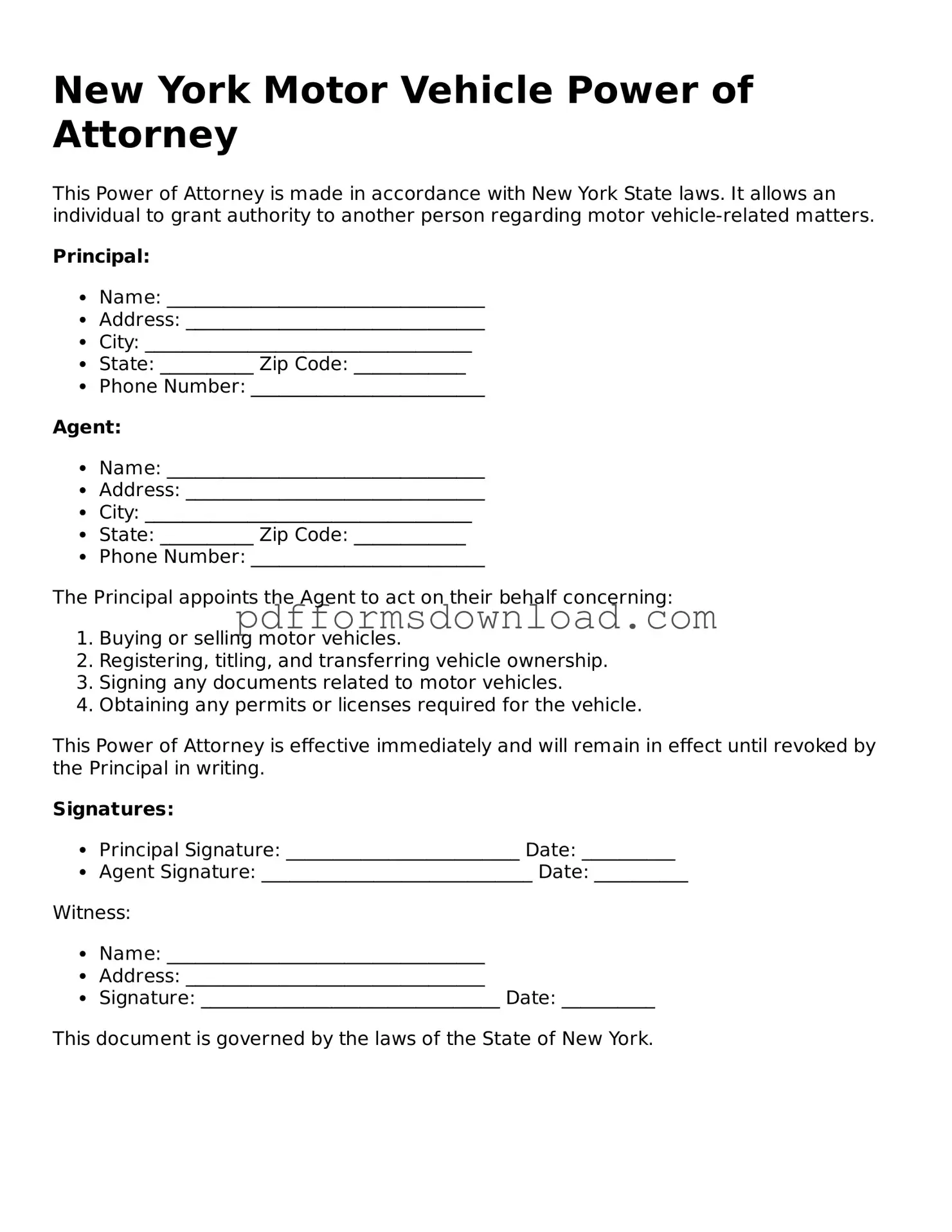What is a New York Motor Vehicle Power of Attorney form?
The New York Motor Vehicle Power of Attorney form is a legal document that allows an individual (the principal) to designate another person (the agent) to act on their behalf regarding motor vehicle transactions. This can include tasks like signing documents, transferring titles, or registering vehicles.
Who can be designated as an agent?
Any competent adult can be designated as an agent in the Motor Vehicle Power of Attorney. This could be a family member, friend, or a trusted individual. It's important to choose someone who you trust to handle your affairs responsibly.
What types of transactions can the agent perform?
The agent can perform various transactions related to motor vehicles, such as signing title transfers, applying for registration, and dealing with the Department of Motor Vehicles (DMV) on your behalf. The specific powers granted can be outlined in the form.
Do I need to notarize the form?
Yes, the New York Motor Vehicle Power of Attorney form must be notarized. This step adds an extra layer of authenticity and ensures that the document is legally binding. Notarization helps to prevent fraud and protects both the principal and the agent.
Can I revoke the Power of Attorney once it is granted?
Yes, you can revoke the Power of Attorney at any time, as long as you are mentally competent. To do this, you must create a written notice of revocation and provide it to your agent and any relevant parties, such as the DMV.
Is there a fee associated with the form?
There is no specific fee for completing the New York Motor Vehicle Power of Attorney form itself. However, there may be fees associated with the transactions the agent performs, such as title transfers or registration fees at the DMV.
How long is the Power of Attorney valid?
The validity of the Power of Attorney depends on the terms outlined in the document. Generally, it remains in effect until you revoke it or until the specific task is completed. If you specify a duration in the form, it will only be valid for that time period.
What happens if my agent misuses their authority?
If your agent misuses their authority, you may have legal recourse. You can revoke the Power of Attorney and potentially pursue legal action if the agent's actions have caused you harm or financial loss. It is crucial to choose a trustworthy agent to minimize this risk.
Where can I obtain the New York Motor Vehicle Power of Attorney form?
The form can typically be obtained from the New York State Department of Motor Vehicles website or at local DMV offices. It is important to ensure you are using the most current version of the form to avoid any issues.
